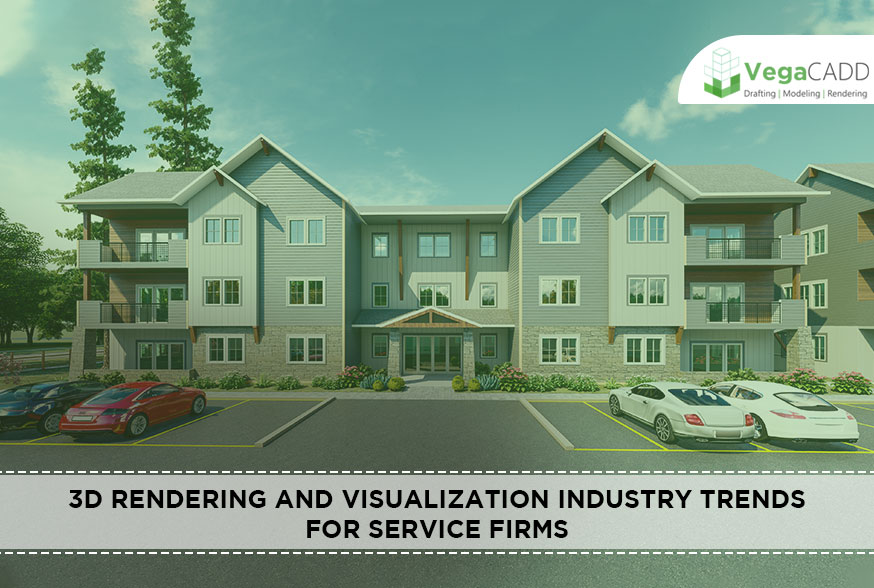Ever since the 3D rendering and visualization industry started, it has been growing at a rapid rate. The latest technology innovations have spurred even more demand for these services as well as improved methods of delivering them to customers. One such innovation is photorealistic rendering, which provides high-quality images that are indistinguishable from photographs. As this trend continues to grow in popularity, service firms will be able to take advantage by offering their clients this innovative new type of service.
3D Rendering and Visualization Industry Trends for Service Firms: Current State of the Market - With such high demand from clients, there are a multitude of companies that have sprung up to offer renderings services on either end or both ends (from product design all the way through final renderings).

1. 3D Rendering and the Rise of VR and AR
Virtual reality (VR) and augmented reality (AR) are quickly becoming the best methods for viewing 3D rendered content. As more VR headsets are released, the demand will continue to grow for highly realistic 3D rendering techniques. Thankfully, there has been a recent rise in new technology that is changing how 3D modeling services are created and used today. These include advances in photorealistic rendering software such as V-Ray RT or Maxwell Render; GPU acceleration of CPU-based ray tracing algorithms; and realism improvements from AI-driven procedural generation of textures, materials, lighting effects, etc.
2. 3D Rendering for Showcasing Different Views of an Interior
3D Rendering is a great way to showcase different views of an interior without the need for expensive photography. It can also be used in the virtual walkthroughs of buildings and landscapes to give clients a sense of what their new home will look like or where they'll spend their next vacation. 3D rendering is becoming more popular with architects, designers and builders because it allows them to visualize how their building will look before construction begins.
3D Rendering allows you to create photorealistic images that are almost indistinguishable from photographs in terms of realism. This technique has been used by architects and engineers since its invention in 1986 to visualize their projects before they are built or modeled in the computer-aided design programs like AutoCAD, Sketch.
3. Photorealistic Imagery and Static Diagramming
Photorealistic imagery and static diagramming are two different tools that can be used to depict the same product or service. They both have their strengths and weaknesses, but in this we will focus on the differences between them.
Photorealism is a style of art which strives for an image to look as real as possible - think hyper-realistic paintings like those by Chuck Close or photographs taken with a high enough resolution so that they appear lifelike. Static diagramming, on the other hand, relies on symbolic representations of objects rather than realistic images to convey information about how something works.
4. An Increase In Reliance On 3D Rendering for Stronger Sales Conversions
3D rendering has become a more popular option for companies looking to increase sales conversion rates. 3D Architectural visualization is an effective way to showcase products and services in a virtual space, enabling customers to explore their options before making decisions. This trend has been on the rise as consumers have become more savvy and want to see what they are buying without having physical access or being able to touch it first.
3D rendering company, Vegacadd offers fast service with high-quality imagery that will help any business grow its customer base by showing them all of their product’s potential uses. The team behind this innovative brand knows how important it is for clients to be able create visualizations of their projects so they can present them confidently at meetings.